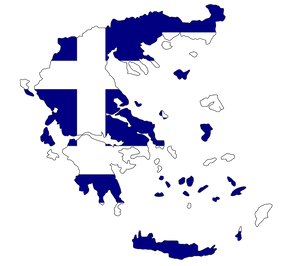-
National Association(s)
-
Education
-
Recognition
-
Employment
-
Research & Publication
<
>
The Ηellenic Art Therapists’ Association - HATA currently cannot be found online
The Training program is only private. It is offered in Art and Psychotherapy Centre (A.P.C.) in Athens, established in 1990.
The program aims to provide professional training and proficiency in Art Psychotherapy to psychologists, psychiatrists, teachers, special education teachers, social workers and artists. Through theory, practice and personal development it provides a capacity to undertake preventive, advisory or therapeutically children, adolescents and adults, with any kind of disorder, along with people who want to come in touch with their creativity and express their potentials.
The post graduate training in art psychotherapy leads to a Certificate of Specialization in Art Psychotherapy from the Arts and Psychotherapy Center, which has been accredited by the European Association of Psychotherapy (E.A.P.).
The program offers a chance of post graduate level training for people who have already a degree in Social Sciences from a University or a Technical School or a degree in Fine Arts.
Training is based on the psycho therapeutic principles through Art. The basic goal is to provide trainees with the knowledge of the clinical application of Art Therapy, in which the use of artistic materials and the procedure of creating images, play a central role within the framework of the therapeutic relationship.
The program aims to provide professional training and proficiency in Art Psychotherapy to psychologists, psychiatrists, teachers, special education teachers, social workers and artists. Through theory, practice and personal development it provides a capacity to undertake preventive, advisory or therapeutically children, adolescents and adults, with any kind of disorder, along with people who want to come in touch with their creativity and express their potentials.
The post graduate training in art psychotherapy leads to a Certificate of Specialization in Art Psychotherapy from the Arts and Psychotherapy Center, which has been accredited by the European Association of Psychotherapy (E.A.P.).
The program offers a chance of post graduate level training for people who have already a degree in Social Sciences from a University or a Technical School or a degree in Fine Arts.
Training is based on the psycho therapeutic principles through Art. The basic goal is to provide trainees with the knowledge of the clinical application of Art Therapy, in which the use of artistic materials and the procedure of creating images, play a central role within the framework of the therapeutic relationship.
No state recognition.
Visual art therapy is conducted in a variety of settings with other allied health professionals and in multi-disciplinary teams. For example:
- Public and private settings.
- Psychiatric hospitals.
- Prisons.
- Family welfare agencies.
- Nursing homes.
- Rehabilitation centres.
- Drug and alcohol units.
- Women's health centres.
P. Asimakis (2001), Contemporary Psychotherapies in Greece: from theory to practice.
N. Tsergas (2013), Therapeutic approaches through art.
The contribution of psychotherapies through arts in psychiatry, edition of the National and Kapodistrian University of Athens (in press), Collective edition.
There are also translations of other books about Art therapy and Art Therapy Techniques.
From 2011 APC conducts a qualitative research with the general title "Study for the development of creativity: the body, the visual expression and the relationship between them."
In Eginition Hospital a comparative study of group art psychotherapy and group analytic psychotherapy is in progress (since 2012). It studies the improvement of verbal fluency and the ability of representation in people with severe personality disorders.
N. Tsergas (2013), Therapeutic approaches through art.
The contribution of psychotherapies through arts in psychiatry, edition of the National and Kapodistrian University of Athens (in press), Collective edition.
There are also translations of other books about Art therapy and Art Therapy Techniques.
From 2011 APC conducts a qualitative research with the general title "Study for the development of creativity: the body, the visual expression and the relationship between them."
In Eginition Hospital a comparative study of group art psychotherapy and group analytic psychotherapy is in progress (since 2012). It studies the improvement of verbal fluency and the ability of representation in people with severe personality disorders.


